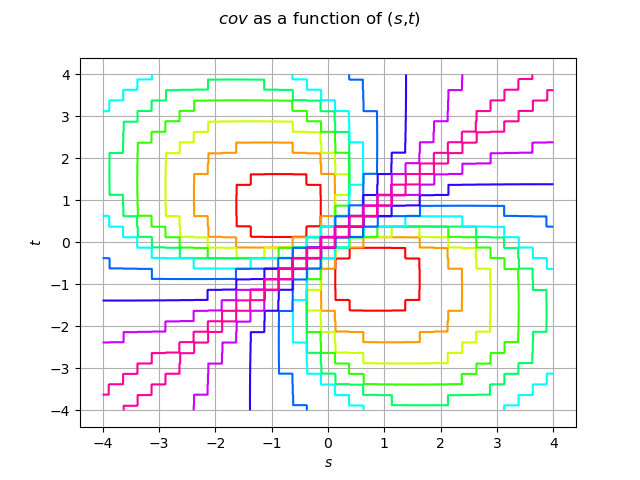Note
Click here to download the full example code
Create a custom covariance model¶
This example illustrates how the user can define his own covariance model.
from __future__ import print_function
import openturns as ot
import openturns.viewer as viewer
from matplotlib import pylab as plt
import math as m
ot.Log.Show(ot.Log.NONE)
Create the time grid
N = 32
a = 4.0
mesh = ot.IntervalMesher([N]).build(ot.Interval(-a, a))
Create the covariance function at (s,t)
def C(s, t):
return m.exp( -4.0 * abs(s - t) / (1 + (s * s + t * t)))
Create the large covariance matrix
covariance = ot.CovarianceMatrix(mesh.getVerticesNumber())
for k in range(mesh.getVerticesNumber()):
t = mesh.getVertices()[k]
for l in range(k + 1):
s = mesh.getVertices()[l]
covariance[k, l] = C(s[0], t[0])
Create the covariance model
covmodel = ot.UserDefinedCovarianceModel(mesh, covariance)
Draw the covariance model
def f(x):
return [covmodel([x[0]], [x[1]])[0, 0]]
func = ot.PythonFunction(2, 1, f)
func.setDescription(['$s$', '$t$', '$cov$'])
cov_graph = func.draw([-a] * 2, [a] * 2, [512] * 2)
cov_graph.setLegendPosition('')
view = viewer.View(cov_graph)
plt.show()

Total running time of the script: ( 0 minutes 2.384 seconds)
 OpenTURNS
OpenTURNS